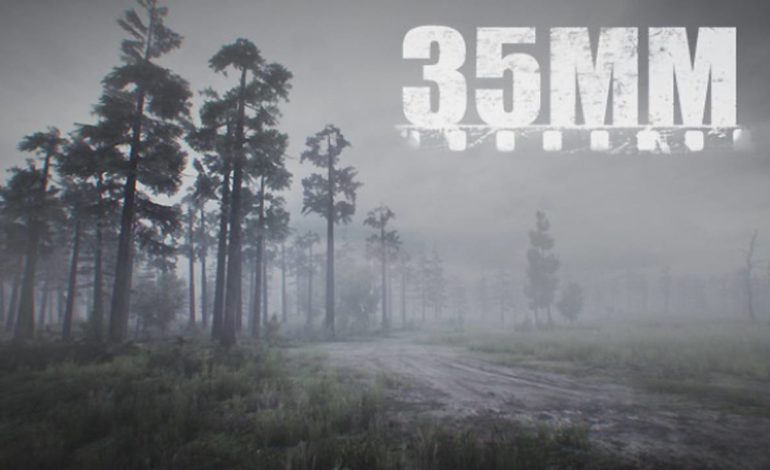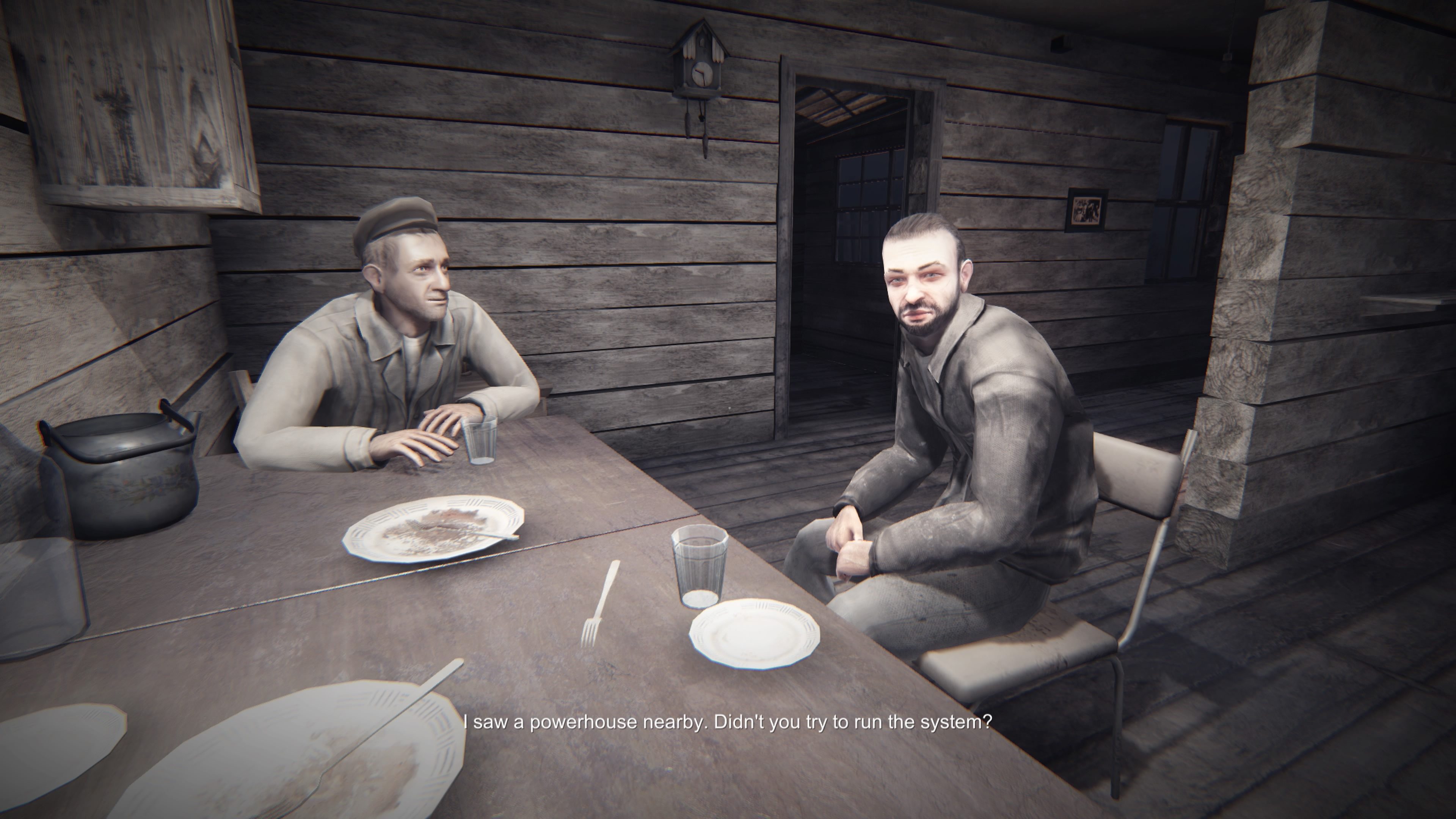

For those of you that checked out the recent release Martha is Dead (which I also recently reviewed), 35MM is, in many ways, the complete inverse of that. The game came out in 2016, though the console ports made by porting company Sometimes You just came out this year, and it brings a wartime game that hovers somewhere between a walking sim and a photography simulator. Despite the on-paper similarities, 35MM, developed by a single developer named Sergey Sergeich, features a much more free-flowing, strange experience that clearly has a vision despite its lack of focus.
For a game named after cameras, 35MM’s gameplay is much less photography-focused than you would expect. In fact, the gameplay as a whole has a distinct lack of focus. The game opens with you walking through the woods with your partner, who you accompany throughout the game, and gives you little more than your camera. The photography system isn’t terribly complicated, but it gives you enough control over things like focus and exposure to still be interesting. Strangely, though, photography plays barely any role in the game. In 35MM, you can take pictures, but the game never really requires you to. The photography mechanic acts more like a tone-setter, encouraging you to slow down and find ways to admire the environment.


Speaking of the environment, it’s not beautiful. As you might expect from a 2016 Unity game made by a lone developer, 35MM’s graphics are a little rough, to say the least. You won’t find the blockbuster, ground-breaking graphics that a game like Martha is Dead has, but that doesn’t necessarily hurt the game. Personally, I feel that the rough, chunky graphics of 35MM give it a certain charm. The game, while not beautiful in any sense, is entirely cohesive and all the modeling, textures, lighting, and colors work very well together.
Unfortunately, I can’t say that I have the same adoration for the sound design in the game. Aside from some pretty disappointing sounds settings, the game’s sound design varies quite a bit. Some elements, like the voice acting, are very good and quite possibly create the game’s core experience, but other elements, like the environmental sounds, don’t seem fully thought-out and the game will often overplay or loop rather unpleasant sounds, which can make spending time in certain areas, like the woods, particularly difficult.
To bring it back to the gameplay, though, the game starts going all over the place pretty quickly. After the opening walking scene, which drags on a little longer than I would have liked, you and your partner get chased through the woods by a bear, which ends in a couple of quick quick-time events. From here, you start getting into the core game. Your partner has you explore the town you find yourselves in, looking for water while you wait for the sun to rise. Most of the game will have you walking around areas, looking at things, picking things up, and following your partner, but it also will somewhat randomly introduce things like quick-time events, train controlling, and even light gunplay as the plot requires it.


These mechanics work pretty well for the game, at least in theory. While I don’t generally care for QTEs, in a short, tightly-made game like this, I can appreciate how they keep you involved in the actions of the world without requiring complex gameplay systems that would not see enough use to make them worth it. That is only true if the quick-time events work, though. I found that oftentimes in 35MM the button prompts just didn’t work and wouldn’t read my input (not to mention it wasn’t really clear if I was supposed to press the button once or repeatedly), forcing me to replay certain fight scenes several times, despite me pressing all the inputs correctly on the first or second try.
Perhaps the most annoying segment for me was the first time the game introduces its gunplay. The game briefly requires you to shoot at a few enemies, but the section, for many reasons, worked particularly poorly. Firstly, the game doesn’t tell you which button to use for the gun, which generally might not be a problem, except for the fact that the gun button is different than the button that controls all the other objects in the game. This is only a problem if the button even works, though, which, for a solid fifteen minutes, it did not for me. For the first several times I played the scene, I tried pressing literally every button on the controller and none of them fired the gun in my hand. I had to completely reload the scene from the main menu twice before the gun actually worked.


Once I got it working, the game only gives you something like eight bullets, and it took me three to kill one of the three enemies. Pair that with my several missed shots and I quickly ran out of ammo. From here I just started running away, which is apparently what I was supposed to do the entire time, as my partner began following me, and we both made it out of the encounter alive.
This points to perhaps the most core problem that 35MM faces: a lack of direction. The game, in its effort to adhere to its immersion and lack of tutorials, will often require you to do things or give you objectives and just not tell you what they are, or maybe it will bury the direction in some off-hand comment your partner makes. The same lack of direction goes for the controls. The game has a controls guide in the settings, but even that didn’t always help me, as was the case with the gun.
Despite its flaws, though, 35MM presents a lot of charm and a pretty interesting world. Because the game was made in a much older, less well-equipped version of Unity by a lone developer, I feel compelled to excuse a lot of its problems. If you spend the $10 to play the game, you are probably going in prepared for a lack of polish, and I think from that perspective, the game will probably deliver exactly what its players are looking for. The game failed to really grab me, but it definitely has a story and world worth checking out if the game seems like it might be your thing.
Score: 6 out of 10
Reviewed on PC
Play games, take surveys and take advantage of special offers to help support mxdwn.
Every dollar helps keep the content you love coming every single day.
